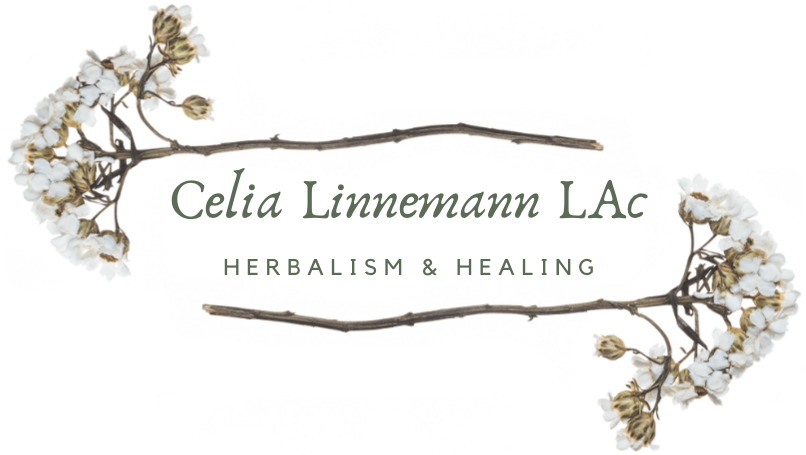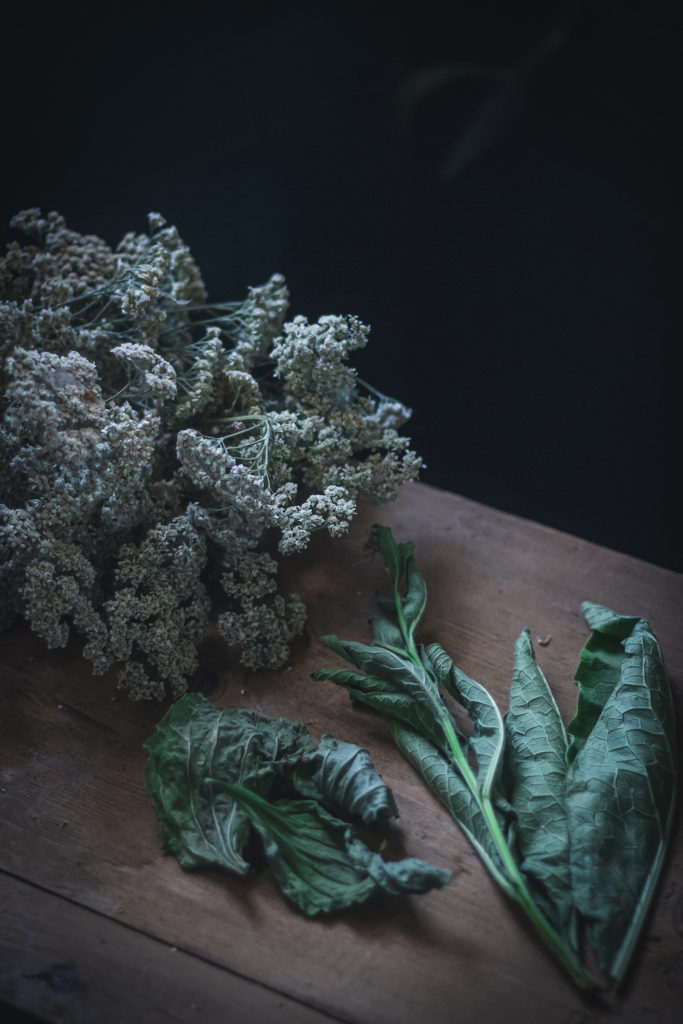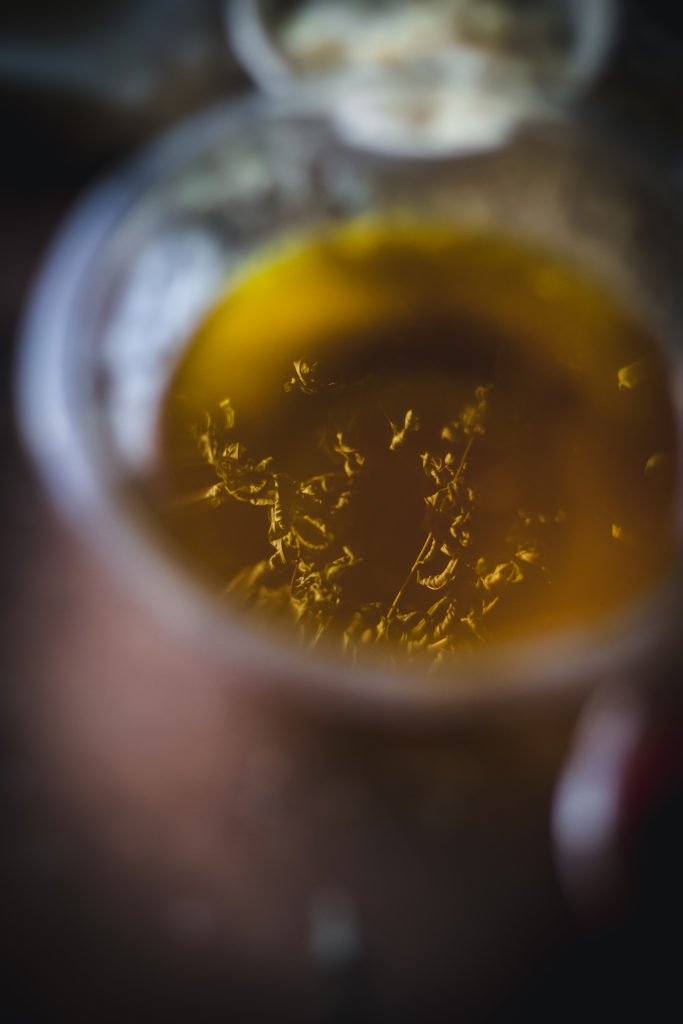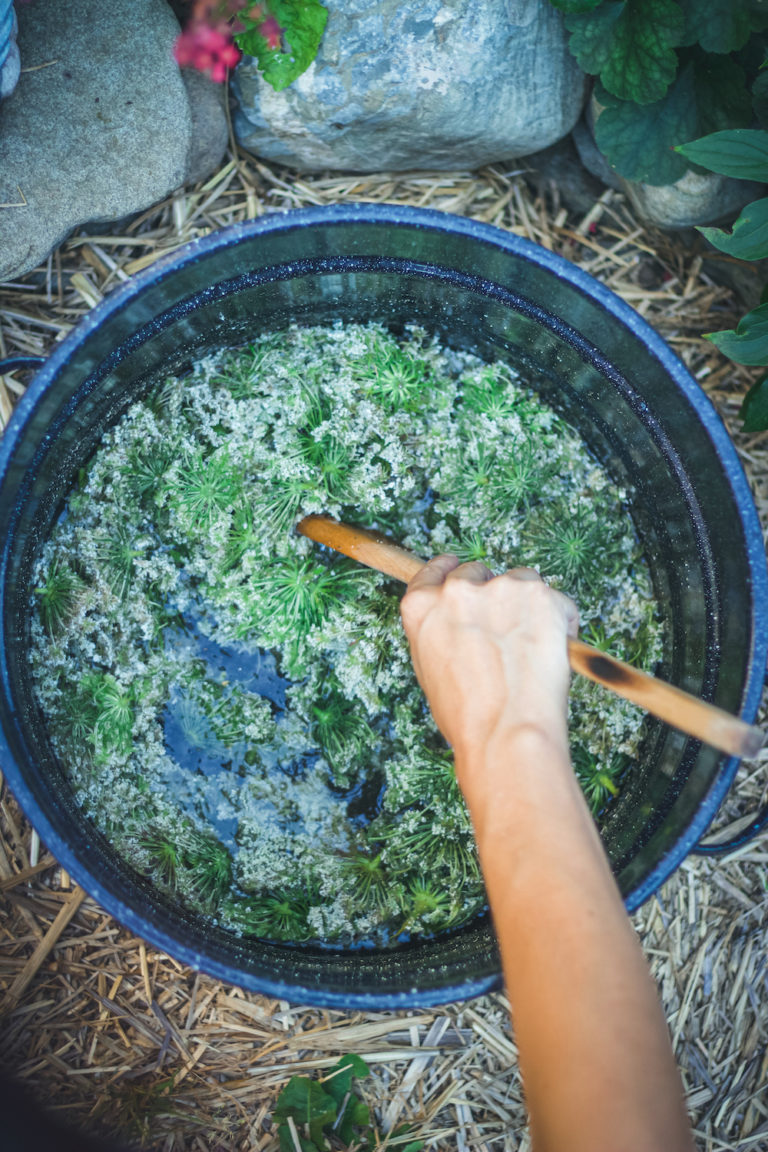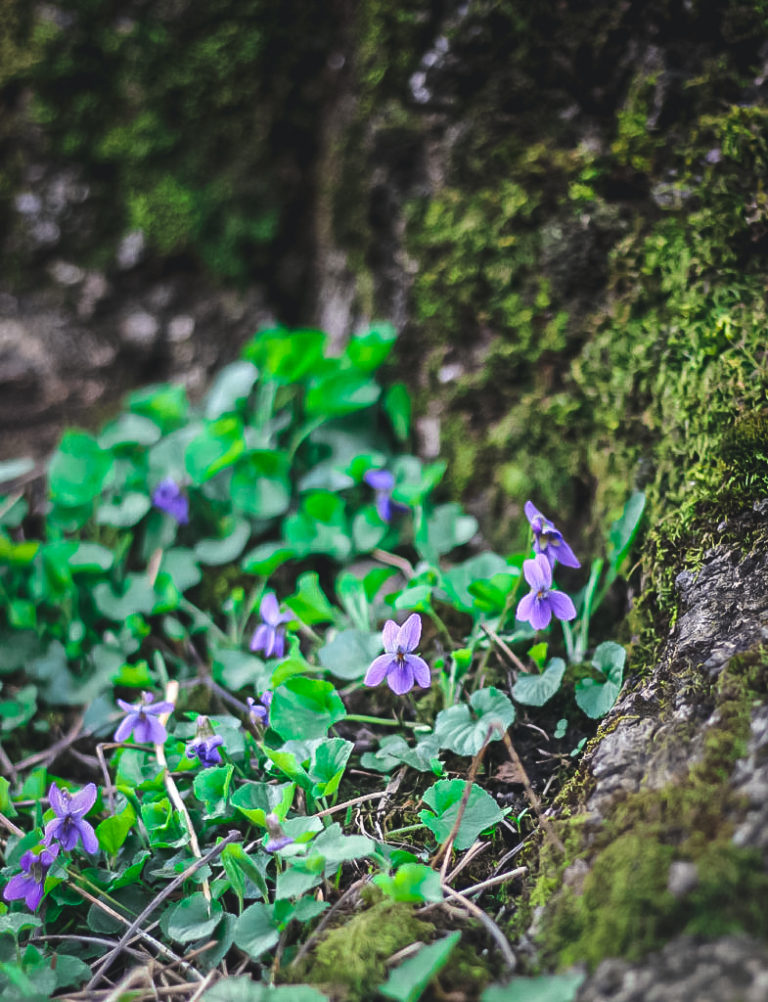Healing Herbal Oil Recipe with Yarrow, Plantain, Calendula and Comfrey
I am gearing up to make an all-purpose healing herbal salve. But first, I made a batch of herbal oil. In this post I share a herbal oil recipe template when using fresh(ly wilted) and/or freshly dried herbs.
There are many herbs you can choose for making a healing herbal oil. A few that I like are Yarrow, Plantain, Calendula, Comfrey and St. John’s Wort.



Herbal oils: Slow medicine for fast times
I love making herbal oils.
Like tinctures and elixirs, they take a good 6 weeks or more to make. This allows me to be my slow medicine self. Once the herbs are steeping in the oil, they can macerate for as long as it takes me to get around to them.
Rosemary Gladstar says there is some sort of magic that prevents herbal oils from going rancid while the herbs are steeping in them. Once you strain out the herbs, the oxidation clock starts ticking. It varies, but one year is kind of typical for the shelf life of a strained herbal oil.
So don’t feel bad if it takes you a few months (or a year) to get around to straining the oil.
However, there is one thing I am a little picky about when I make herbal oils: I like to have a source of warmth. Warmth of the summer heat is my preference.
A second ideal situation would be a warm place in a house, like over a radiator, a sunny windowsill, next to a heater, or on a stove top that is warm to the touch when the oven is in use (but not on a burner of course).
Yes, you can warm the oil up gently in a double boiler from time to time. I have definitely done that in the past. It works quite well. But right now I am all about embracing my inner lounger Taurus rising.
One more thing I like to do when I make oils is to moisten the herbs with a small amount of alcohol prior to adding in the oil. This helps makes a more of a multifractional extract. I wrote about this in this article Multi-Fractional Lavender Herbal Oil Recipe.
How I make herbal oils is really quite simple: mix a small enough amount of alcohol into an herb so that there isn’t any alcohol to pool at the bottom of the jar, but yet the herb is fully and equally saturated by the alcohol.
Herbal body oils for the nervous system
Another reason I love herbal oils (besides being easy to make) is that they are valuable medicine.
Herbal oils are soothing to the skin, of course. The oil medium is moisturizing and softening. But herbal oils are also simultaneously soothing to the nervous system and the immune system. I believe this to be true regardless of the individual properties of the herbs in the oil.
I wrote about this in this blog entry about Multifractional Lavender herbal Oil.
“Anything we apply to our skin is absorbed by the dermis and makes contact with the immune and nervous system very quickly (this is one of the reasons I love herbal foot baths so much, too).
“The skin is partially made up of phagocytes, a white blood cell and part of the immune system, and they are tasting everything they come in contact with.
“The body is an integrated unit. We can’t separate where the functions of one system ends and another begins. They all feed back on each other.
“The skin is a sense organ of the nervous system, a connective tissue organ and an immune organ. It has afferent nerve tissue which sends sensory information to the central nervous system. It is partly because of its connection to the nervous system and immunity that skin helps to maintain homeostasis.
“Massaging herbal oil into the skin is a way to feed and nourish the nervous system. Using pressure and heat increases the rate of absorption of constituents through the skin and thus delivers the medicine more thoroughly.”

Herbs to choose for a healing oil (and eventually for a salve)
There are many herbs to choose from when making an herbal healing oil.
Which freshly growing herbs do you have access to at this time?
At the time of writing this, it is November in the northern hemisphere. Here in Oregon herbs are still going strong, so I could choose just about anything I would’ve in June.
In a snowy, cold climate, you may have to look harder, but I bet there are a few healing herbs around.
Yarrow leaves, close to the ground.
Chickweed in protected areas sheltered from the cold wind. They thrive in the cooler, wetter shoulder seasons.
Plantain, scraggly but still tough as nails.
Maybe a few Calendula blooms. Calendula got their name because of their capability to bloom every month of the calendar.
St. John’s Wort is done, even here in our temperate climate.
But I still have a few Chamomile flowers and a vibrant patch of Comfrey. Random Roses will start to bloom around December and January (crazy, I know).
You can use dried herbs, too. If you do this, definitely use heat as part of the extraction process, like with a double boiler. You can also make a alcohol intermediary herbal oil with dried herbs.
When I use dried herbs, I like to use ones that I have freshly dried, like a few days ago to a few weeks at max. They seem to extract a little better for me than commercially available dried herbs.
But that’s just me. There are many great herbal oils out there that start with dried herbs. And I think some dried herbs extract well regardless of it they are fresh or dried. St John’s Wort is one herb to use freshly wilted, though.
Freshly wilted herbs
If you have access to fresh herbs, I recommend letting them wilt for 6-24 hours while laid out on a towel. You may cut them before wilting into smaller pieces.
Wilting allows the excess moisture to evaporate. The herbs shrink.
The slightly less watery herbs extracts a more fully because there is less water that ends up in the mixture. Fresh herbs contain quite a bit of moisture, even if they don’t feel wet to the touch.
What is a healing oil, anyway?
Before we go further, let’s talk about what a healing oil is, exactly.
Healing oil, and the healing salve it is going to be the base for, are generic terms. They are something I kind of made up but yet is a common herbal staple.
The word salve denotes what it will do: soothe, calm, heal, protect.
An herbal oil does the same. It’s just a little bit more oily.
In short, healing herbal oils are a topical remedy for skin irritations, itching, burns, bumps, bruises, scrapes, dryness.
We can format herbal oils like we do for teas and tinctures. We can make ones pain, for specific skin conditions, for soothing the nervous system, for belly aches, pelvic decongestion, varicose veins and hemorrhoids, headaches and so on.
The individual herbs have their own actions, too. I’ve wrote about St. John’s Wort and its many uses medicinal and magical. Aromatic Mugwort oil is a nice pelvic mover and subtly pain relieving, and a potent oil for rituals and dream anointment. Ginger oil is very warming, and especially nice in Sesame oil.
Chinese herbalism has all sorts of aromatic, Blood moving herbs herbs in a variety of herbs oils, and more often, herbal liniments. Myrrh is really nice in herbal oils.
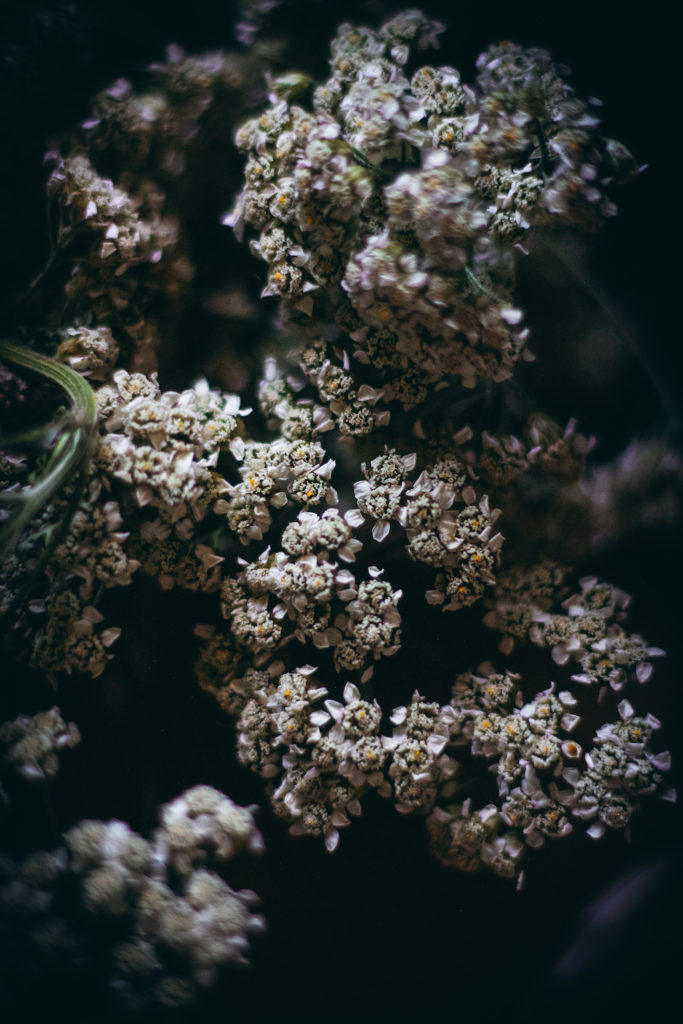

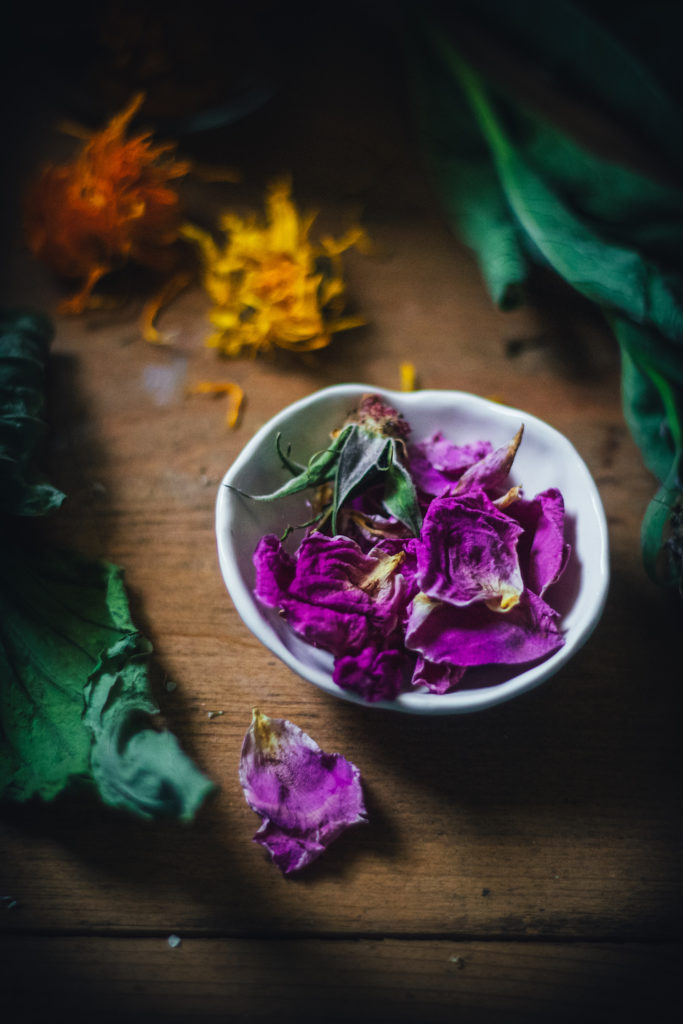
List of herbs to consider for a healing salve
- Calendula
- Plantain
- St. John’s Wort unopened buds
- Comfrey leaf
- Yarrow flowers and leaves
- Arnica flowers
- Marshmallow leaves
- Chickweed
- Violet leaves
- Rose petals
- Chamomile
- Cottonwood buds
- Conifer tips or resins
There are many ways to look at the medicinal qualities of these herbs. The overlap between them is immense, meaning an herb that is a wound wort can be a skin soother and so on.
Herbs do not have one single use. They do not belong to one single “category”.
But to keep things simple, I am going to stop myself from going in too much. I want to keep this inspiring and do-able (we can study materia medica later). Still, this is just scratching the surface.
Wound Worts: Pain, Bruising, Contusions, minor cuts and scratches
St. John’s Wort – Hypericum perforatum – SJW is specific for pain, especially nerve pain. I love SJW for bruises and contusions. Anytime my kids get a bump, we rub in the SJW and most of the time a bruise won’t even form. Also great for burns.
Comfrey leaf (and root) – Symphytum officinale – This is a very mucilaginous herb. Comfrey is very soothing to the dermis and promoting healing, they are a notable skin healer when water extracted. But I think they are more of a wound wort when extracted in oil.
Yarrow – Achillea millefolium – As a water extract or a direct spit poultice, I love Yarrow for cuts, contusions, pain and bruises.
As an oil extraction, I still think Yarrow will help in those situations, but don’t use oil directly in the new cut. Wait until the cut heals before using oil or salve on the area.
Yarrow oil or salve will definitely help when the wound area has been through the initial healing stages and is stagnant, dry, crusty and surrounded by bruising, and needing some gentle blood moving qualities.
Arnica – Arnica montana – Arnica is such a wonderful healing and pain-relieving remedy for bruising and acute trauma to the skin and body.
Skin Healers: Relieving itching, irritation, cuts, stings, and inflamed, infected states
Calendula – Calendula officinalis – Calendula is a reliable antimicrobial. As a aromatic, balsamic plant, they are cleansing, drying and uplifting to stagnant, boggy, congested areas. Excellent for diaper rash (this sunny being is known for working in areas ‘where the sun don’t shine’), after a direct application of a cleansing and healing herbal poultice.
Also a good lymphatic support herb. With Violet in an oil for breast, axial (armpit) and inguinal lymphatic support.
Plantain – Plantago spp. What can I say about Plantain? Very healing to the skin!
Skin Soothers: similar to Calendula and Plantain but with more cooling, moistening, vulnerably properties
Marshmallow leaves and root – Althea officinalis – Lovely skin feel. Excellent carrier of the aromatics of other plants, like blended with powdered Rose petals or Vanilla. Decedent in rich animal fats or coconut oil. Silky smooth demulcent properties (moreso in the root).
Chickweed – Stellaria media – A itch-stopping, skin healing remedy, as well as a lymphatic supporter. I used this a lot when I had a dog with severe eczema. Softening to hardness. Effective for lipomas in dogs, take internally too.
Violet leaves – Viola odorata – Green skin cooler soother, also supportive to lymphatic tissues and functions, especially breast tissue. Softens hard edges, like Chickweed.
Aromatic skin soothers: Anti-inflammatory, soothing and cooling with a scent
Rose – Rosa spp. Imparts a very subtle Rose aroma to an herbal oil while harmonizing the whole blend into one cohesive formula. Powdered Rose petals are nice to mix into an oil or salve, for extra cooling or ritual/magical properties.
Chamomile – Matricaria recutita – I love this physician of a plant in oils where I’m looking for cleansing, anti-inflammatory and relaxing properties. Chamomile oil is especially indicated for children and babies.
Lavender – Lavandula angustifolia – Very very calming to the nervous system. Lavender herbal oil regulates, vents and chills out our emotional body, partly because this plant soothes the Liver (capitalizing because I’m thinking of the Liver from a Chinese Medicine perspective).
Conifer tips and resins – Incredibly refreshing, uplifting and yet grounding. Conifer oils are medicinal to the entire being. Use more sparingly at first, they can be potent.
Cottonwood – Populus spp. – Cottonwood oil massage on a congested chest or aching muscles affected by wind, damp and cold is one of the most kindly things you can do for yourself. That scent! Cottonwood is one of those ‘heaven on Earth” plants for me.



the herbs mixed with a little bit of alcohol
Basic Herbal Healing Oil Recipe
- Gather fresh herbs for your oil.
- Wilt for a day or overnight, if desired.
- Fill a jar about halfway with those wilted, freshly dried herbs.
- Pour a small amount of alcohol, grain or 40 proof like brandy or vodka into the jar and mix thoroughly with a spoon to fully saturate the herb. I use about 2 tablespoons alcohol for a half filled quart jar and about one tablespoon for a half filled pint jar.
- Let the alcohol-mixed herbs sit for a couple of hours.
- Pour your favorite carrier oil into the jar. Make sure there is about 1-2 inches of “head space” in your jar. This means there is about 2 inches of oil above the level of the herbs. Often the oil will not be directly on top of the herbs but under or in between the herbs. Wherever it is, try to make it be 1-2 inches. You will probably have to add more oil a day or two later as the herbs absorb it through the steeping process.
- Cover. Shake well! Let sit in the sun for a minimum of 6-8 weeks. It’s up to you.
- Wilted or freshly dried herbs will be less likely to cause moisture to build up in the jar and cause mold. But it is still possible. Check inside the jar frequently for moisture before you go to shake it. Wipe out with a clean, dry cloth if you see it.
- Strain through a colander or strainer, the strain again through cheesecloth.
- Label your newly strained oil and store in dark jars. Keep them in the fridge to extend their life even longer, if desired.
- Use liberally, daily even. Massage into your entire body, or just your earlobes. Use for acute pain, and for chronic achiness. Use however you please.
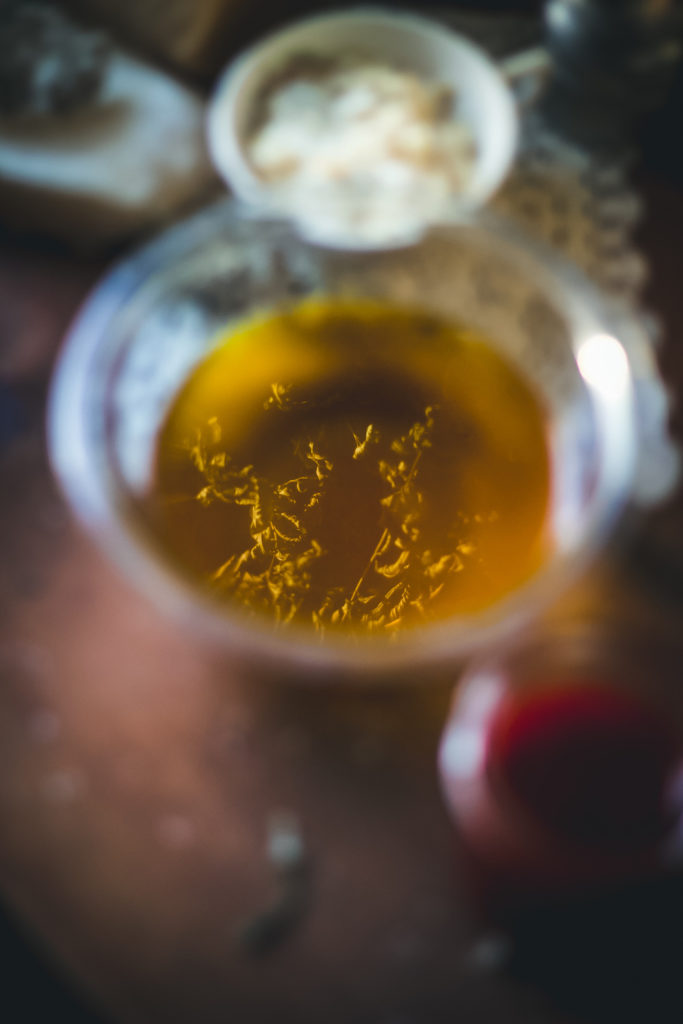


Sending you the soothing healing comfort of a jar of herbal oil.
Thanks for being here and thanks for playing with the plants. They are here for our nervous and immune systems and our whole being.
Take good care,
Celia
